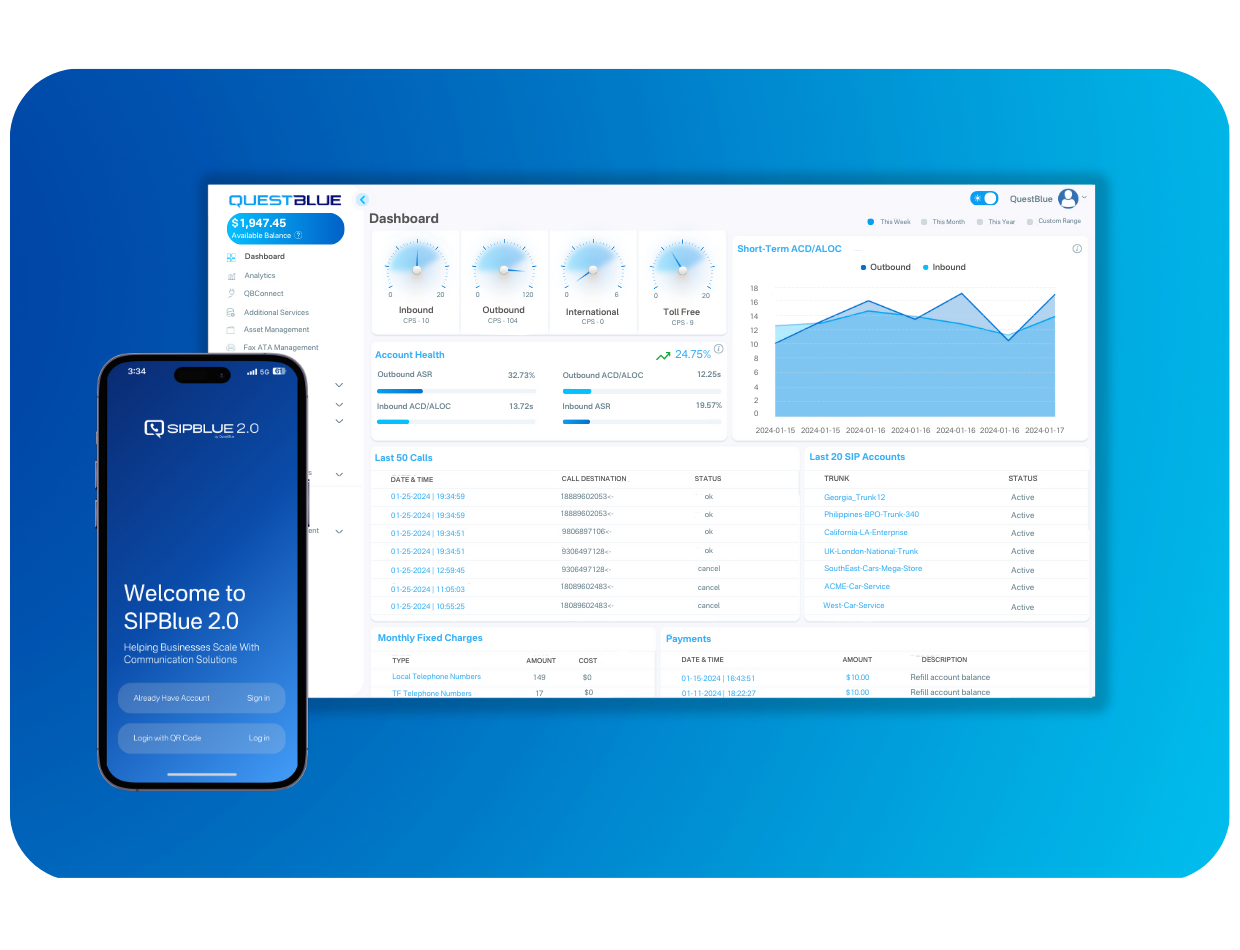How QuestBlue and FCC Are Working to Combat Robocalls
In recent years, QuestBlue has implemented a group of protocols known as, STIR/SHAKEN. STIR, standing for Secure Telephone Identity Revisited and SHAKEN, standing for Signature-based Handling of Asserted Information Using toKENs. These protocols combat caller ID spoofing on public telephone networks.
December 19, 2022 | 3 min read

basics to know
Other companies, including UK based provider EE, have also started using a new AI anti-spam firewall to keep away a surplus of scam calls and texts, which has helped block 11 million calls since it hit the ground running in July.
The FCC started requiring providers to implement this into the IP of their networks on June 30, 2021. They also mandated that a robocall mitigation program be fully instituted by April 20, 2021, to ensure that they are not originating illegal robocalls.
STIR/SHAKEN digitally validates the handoff of phone calls passing through the complex web of networks, allowing the phone company of the consumer receiving the call to verify that a call is in fact from the number displayed on Caller ID. It prevents scam callers from deliberately using a real number to look genuine. They are often led by global scam networks with the intention of illegally obtaining personal data, access to electronics and bank information.
QuestBlue is committed to preventing these robocalls and has been working to ensure they be stopped completely by following the FCC rules and guidelines.
Here is what the FCC has been doing:
- Issuing hundreds of millions of dollars in enforcement actions against illegal robocallers.
- Empowering phone companies to block by default illegal or unwanted calls based on reasonable call analytics before the calls reach consumers.
- Allowing consumer options on tools to block calls from any number that doesn’t appear on a customer’s contact list or other “white list.”
- Requiring phone companies to implement caller ID authentication to help reduce illegal spoofing.
- Making consumer complaint data available to enable better call blocking and labeling solutions.
Conclusion
Since the protections were put into place, billions of scam calls have been blocked so far.
US and UK intelligence agencies have been warning people that multiple cyber-attacks and other tech-based scams have been increasing since the Russian invasion of Ukraine in March this year. A lot of the instruction given might seem self-evident and straightforward to some, but plenty of others are still getting taken advantage of. This gives fraudsters reason to believe they have a chance to try it and succeed.
Basic mindfulness and protection of your personal data is always a good idea, but the other half of the struggle will always be coming up with new and more advanced protection technology. The end goal is to see less and less fraudulent calls, and more protection to prevent the defenseless from falling victim.




